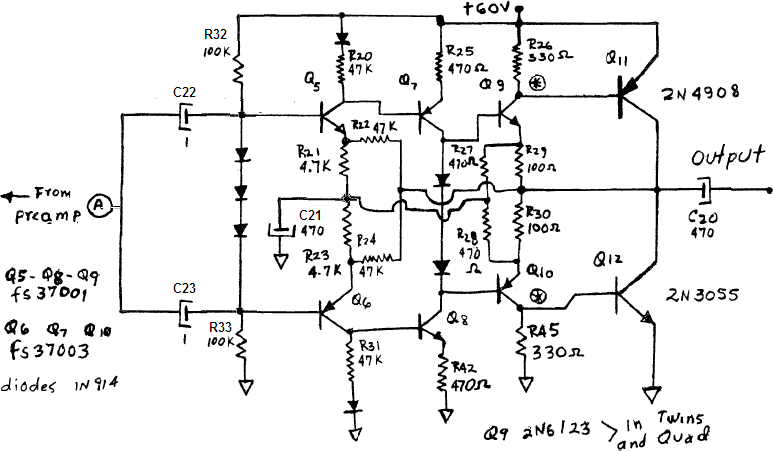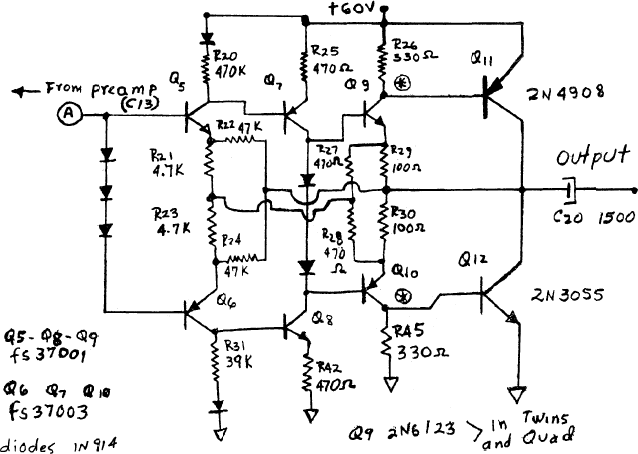Checked with other schematic places that say they have a Freedom Amp schematic, and apparently this one, dated 6/18/75, is the only version in existance. I don't understand that - during the early 1970s Electro-Harmonix would sell you the amp in kit form, so I would think there would be at least some dated before 1975.
I thought about getting a schematic for the "Dirt Road Special" as it should be basically the same amp. While I was searching I happened upon a almost too small to be useful DRS schematic posted on a German forum. After registering (necessary to view the schematic), I was surprised at how the power amp was almost identical!! Almost, but not quite.
Since it was too small I had to blow it up multiple ways to get the circuit values. Then I modified the original schematic with the differences:

From Q7 through Q12, the circuit is identical. All of the changes center around Q5 & Q6.
o The addition of R32 & R33 to the base of Q5/Q6.
o The preamplifier input is routed through a separate cap to the base of both Q5 and Q6.
o Q5/Q6 collector resistors are now identical values of 47K.
o The addition of C21 at the junction of R21 & R23.
I have much more confidence in this circuit actually working. Just two questions:
1) Does the addition of C21 provide the common reference you though should be at the junction of R21 & R23? I think my assumption is a voltage reference.
2) It seems to me that Q9 & Q10 are expected to provide some gain. I guess I don't understand why that would lead to instability.
Thanks!!

